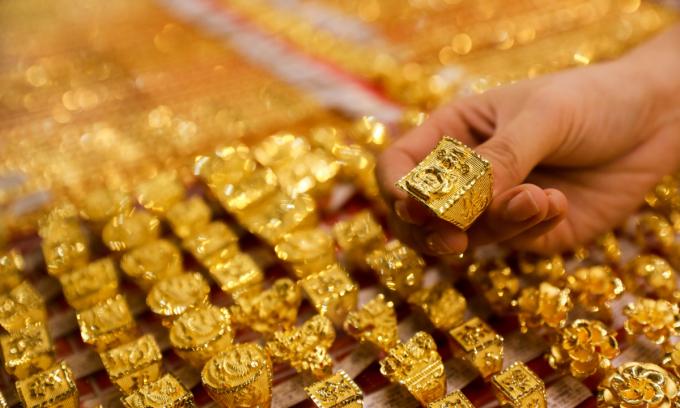More animals can occasionally reproduce asexually through a process called parthenogenesis than scientists realized.


Charlotte the stingray was pregnant. That in and of itself was not all that exciting but, according to the staff at the North Carolina aquarium where she is based, Charlotte also hadn’t come into contact with a male of her species for eight years. She’d been living in a tank with two sharks, and no male rays. Which left people all across the internet wondering: Who was the father of her embryos?
The most likely answer, according to most researchers, was ... no one. There was no father. Charlotte, they believed, had produced these embryos solo, in a process known as parthenogenesis — a form of asexual reproduction.
More specifically, Charlotte probably engaged in something called facultative parthenogenesis, where a species that normally reproduces sexually decides to take this more DIY route. In this particular form of parthenogenesis, a female creates an egg, but instead of the egg merging with a sperm cell, it somehow merges with another egg-like cell. It’s not cloning — the egg and the egg-like cell have a mixed-up version of the female’s genes — but the end result is that the female makes an embryo all by herself.
As the aquarium explained in a video, Charlotte’s unusual pregnancy isn’t predictable, so researchers aren’t sure when Charlotte will give birth. But once scientists test Charlotte’s progeny, she may prove to be the first documented case of facultative parthenogenesis in her species, the round stingray.
Mystery solved. Except ... Charlotte’s story actually points us to a bigger mystery that some scientists are puzzling over: not so much how animals like Charlotte are getting themselves pregnant as why they are doing it.
It might seem, based on the fact that Charlotte could be the first documented case of a round ray reproducing this way, as though parthenogenesis is a really rare, special occurrence. Miraculous, almost, like the stingray equivalent of the immaculate conception. (And believe me, on places like TikTok, the comparison was made. A lot.)
But Alexis Sperling, a University of Cambridge biologist who studies parthenogenesis, says Charlotte’s situation is actually not as unusual as we might think.
“[Parthenogenesis] is probably a lot more common and a lot more widespread than we even know yet,” she told me.
Parthenogenesis is fairly common and varied in insects, but lots of vertebrates can do it too. Decades ago, scientists noted that they’d found examples in every vertebrate class except mammals. (Sorry, Mary.) In 2011, a review paper found more than 80 examples. But even then, scientists started to realize that they may have “underestimated” how common it is in vertebrates, and they keep adding new examples to the record: the parthenogenetic condors a few years ago, the parthenogenetic crocodile last year, new and old examples in species of sharks, snakes, lizards, and even other species of ray.
One researcher I spoke to, Warren Booth at Virginia Tech, told me he once believed parthenogenesis was pretty rare in snakes. Then he published a paper about parthenogenesis in one species, and suddenly snake breeders and researchers started sending him specimens and accounts of parthenogenesis from all kinds of reptile species.
“I had a freezer full of parthenogens, just chilling out,” he told me. Eventually, he changed universities, but until that point, he claims, “I had a hundred and something parthenogens that were sitting in that freezer.”
So all sorts of vertebrates seem to at least be capable of knocking themselves up through parthenogenesis. But again: Why?
On this week’s episode of Unexplainable, Vox’s science podcast, we talk to two scientists, each with a very different answer to that question.
Parthenogenesis, less as a “Virgin Mary” situation and more as a “Hail Mary” pass
Christine Dudgeon is one of the people poking around on the question of why so many vertebrates can do this solo tango. She’s a biologist at the University of Queensland, Australia, who studies sharks and rays, and as she explains it, she stumbled into studying parthenogenesis by accident.
She was trying to study some zebra sharks at an aquarium in Queensland. And while she was doing her work, a zebra shark named Leonie, who was living in a tank with no males, had not one but two rounds of parthenogenetic eggs.
Parthenogenesis had been observed in zebra sharks before. But, as Dudgeon puts it, “In all the previous cases, the documents were of animals who reached maturity in an aquarium setting and had never had exposure to a male.”
This shark, however, was no Virgin Leonie. She had been exposed to males before. In fact, she had had some babies previously, the old-fashioned way. So it was almost like she was toggling parthenogenesis on after having had it shut off, like flipping a switch. And while this kind of switching between sexual and asexual reproduction had been documented in, for example, insects, and would soon be documented in both a snake and an eagle ray, Dudgeon was really surprised to see it in a shark. It got her thinking.
“Rather than it just being this kind of anomalous thing, like a mistake, which was the prevailing concept,” she says, “perhaps this is actually some sort of strategy.”
This is all speculative, but the hypothesis that Dudgeon is playing with is that, for some vertebrates, facultative parthenogenesis might be like the evolutionary equivalent of a Hail Mary pass.
Her logic goes like this: For most animals, sexual reproduction is a better option than parthenogenesis. It gives their babies more diverse genes, and that makes them stronger. But if there are no males around and sexual reproduction is off the table, then maybe something can be triggered in some females’ bodies, letting them pursue this alternative. So a shark like Leonie, removed from males for a long time, could start taking new measures.
For some species, like chickens, parthenogenesis would actually allow a female to make a male to reproduce with. Which is kind of incestuous, but — at least hypothetically, Dudgeon says — it might be better than nothing.
For other species, like zebra sharks, the babies that come out of these parthenogenetic births are always female. So the females can’t make themselves incestuous mates. But Dudgeon still thinks that parthenogenesis could be useful here.
“My current thinking,” she says, “is that it essentially extends the life of the egg cell.”
If the egg cell stays inside the mother and no male shows up, the egg cell dies when the mother dies. But if the mother turns that egg into a female baby, then that female could outlive her and carry her genetic information out into the world.
“And then, hopefully, the female would find a male to reproduce with to then maintain that genetic diversity,” Dudgeon says.
She can imagine a lot of instances where this might be useful. First, in the context of the immense ocean, Dudgeon says it could be hard to find mates across great distances, and this kind of trick to extend your genetic information into another generation might come in handy sometimes. But she’s also interested in the idea of founder populations, where an animal is, say, blown across a barrier like the ocean and on to an island, where it then multiplies, and eventually differentiates into a new species.
“Has [parthenogenesis] had a role in that in some way?” she wonders. “Does it play a role in that for vertebrates as well as invertebrates?”
If Dudgeon’s hypothesis is correct, then this form of parthenogenesis might be a new reproductive strategy for biologists like her to explore. Some of the researchers I reached out to thought this was plausible. Others, though, were more skeptical.
Parthenogenesis as a vestigial tailbone
Much like Christine Dudgeon, Warren Booth also stumbled into parthenogenesis by accident. It all started around 2010, when Booth was a postdoctoral student, and a breeder called him up, asking him to do a paternity test on her snake.
She was reaching out to Booth specifically because he had developed a set of DNA markers that would let him trace genetics in boa constrictors. This wasn’t his main focus. Technically, Booth is a bug guy. His research focus is urban entomology — that’s what he studies now at Virginia Tech, and what he was studying as a postdoc. But, as a kind of hobby and side project, he also keeps and breeds snakes because he enjoys them and likes producing different kinds of colors and pattern variations. So he had, and has, a toe in the world of reptiles.
This breeder told him that her boa constrictor had had a bunch of albino babies; they were caramel albinos, which not only gives them a pretty pink and yellow pattern, but also makes them fairly valuable. And she had housed her boa with a bunch of males, so she wanted to know which of those males was the father of these special, pricy snake babies.
As a postdoc, Booth was trying very hard to find a faculty job, to keep pursuing the science that he was so interested in. Running paternity tests on a snake wasn’t exactly what he was hoping to do with his career.
“I thought it was just the end of the end of the world,” he jokes.
But he figured, sure. He could be the Maury Povich of snakes and figure out who this snake’s dad was. The breeder sent him some snake skin — skin from the mother, her offspring, and the males she’d been housed with — and he ran some tests to compare bits of their DNA. And then he got the results: None of the males was a match.
“It turned out ... there was no father,” Booth says, “It was parthenogenesis.”
This was the first documented case of parthenogenesis in boa constrictors, so he wrote it up in a scientific article. That’s when people started contacting him about all kinds of parthenogenetic snakes and reptiles. It’s also when he started getting the firsthand experience with parthenogens that makes him doubt that vertebrates use parthenogenesis as a Hail Mary pass to keep their genes going for another generation.
Booth actually asked the snake breeder if she would send him one of the albino snake babies so he could learn more about it. She agreed to ship him one in the mail, which is apparently a thing you can do with snakes. (Warren assures me you can easily “overnight them with FedEx.” I have not tested this, but there are lots of instructions online.)
When this baby snake arrived, Booth was, in fact, able to raise it. But the snake was kind of odd.
“It was shorter than similar-aged, sexually produced individuals,” Booth remembers, “And when it reproduced it behaved totally differently.”
Normally, Booth told me, when boas are pregnant, they kind of bask in the hotter end of their tanks. But he says that this snake stayed in the cool end instead. And when it did finally produce its offspring, he says the litter was small, and half the offspring were stillborn.
Then, he says, there was the parthenogenetic ball python family from the UK. Someone sent him a python that was born via parthenogenesis and her daughter, who was also born by parthenogenesis — first- and second-generation parthenogens.
Booth says the second-generation parthenogen died relatively quickly. He was, however, able to get the first-generation parthenogen to reproduce again — sexually, this time. But like the albino boa constrictor, Booth says, this parthenogen was super weird about things.
“She sat in the cool end instead of the hot end,” he remembers, “She produced six eggs, of which five died, essentially. [They] went bad within the first couple of days.”
According to Booth, this all fits a bigger pattern. A lot of parthenogens die as embryos, and those that make it don’t do all that well. And this kind of makes sense when you look at the genetics. Because, in this form of parthenogenesis, the babies wind up with less genetic variation than their parents.
“It makes them the most inbred thing that you can think of in a vertebrate system,” Booth says, “So they’re ... they’re not that great.”
That’s why Booth doesn’t think it really makes sense to think of this as a reproductive Hail Mary pass.
At least in the snakes he’s looked at, he thinks these offspring are just too inbred to meaningfully carry along the torch to another generation. Instead, he thinks that this ability to sort of randomly, occasionally reproduce parthenogenetically is genetic. (This has been demonstrated to be true in fruit flies, but not in other animals.) If that’s the case, he says, then this is potentially just a vestigial thing that popped out in some ancient vertebrate ancestor and that it’s being passed along from generation to generation. But the species would be fine if it eventually faded out.
“My feeling is that these are very ancient traits that are not detrimental, they’re not beneficial. As a result, they’re just kind of meandering their way along through lineages,” Booth says, “They’re not being lost because they don’t kill the female, right? So therefore it’s a trait that is just maintained.”
This would be the equivalent of, say, our tailbones. They’re not actively harming us, so there’s no evolutionary push to eliminate them. But no one’s saying, “Check out the tailbone on that guy. I would really like to tailbone him immediately.” They’re not helping us thrive or reproduce. And if parthenogens are inbred weirdos that can’t really reproduce successfully, then maybe parthenogenesis isn’t a strategic ploy. Maybe, it’s just a tailbone.
Parthenogenesis is an encyclopedia waiting to be researched
Dudgeon is happy to admit that Booth might be right.
“It [parthenogenesis] could be sort of an evolutionary artifact,” she says.
But she doesn’t think that Booth’s weird snakes totally undermine her hypothesis.
Basically, she says that yes, most vertebrates produced through this kind of facultative parthenogenesis might be inbred flops. She acknowledges that most parthenogens die early. But the whole point of a Hail Mary pass is that it’s a long shot. It is probably not going to make it, but it’s better than not doing anything at all.
“It might be a case that this is the ultimate lottery,” she says. “That if you are a parthenote embryo and you’re the one that actually makes it through to adulthood, maybe you got all the good genes, right? Perhaps the ones that do make it are the superstars genetically.”
So maybe Dudgeon is right and there’s some kind of an evolutionary strategy at play here. Maybe Booth is right and parthenogenesis is just a vestigial relic. Maybe both of them are right and parthenogenesis is more of a strategy for some vertebrates than others, say. Or maybe they’re both wrong and something else is going on.
One thing they both acknowledge is that there just needs to be a lot more research done here to get better answers.
“Most of the work that we have really is from animals in human care,” Dudgeon says. “So what about the wild? What’s going on in the wild?”
There are only a couple of papers documenting vertebrates doing this type of parthenogenesis in the wild — one of them co-authored by Booth. In part, that’s just because it’s really hard to spot parthenogenesis in the wild. Researchers cannot monitor wild animals as easily as they can in zoos and aquariums, to know whether or not they’ve been near males, or to check out their eggs to see if they have some surprising embryos in there. But if they want to really answer questions about what role parthenogenesis plays in vertebrate reproduction, they need to know way more about what it looks like in nature.
They also need to answer questions about which species can do this, and why it seems like mammals don’t do it. They need to figure out how, exactly, this particular form of parthenogenesis works and what role genes play. That’s work that Alexis Sperling started on, investigating the workings of parthenogenesis in fruit flies. And, as she puts it, there’s lots more research to do on animals outside of just vertebrates; animals like insects.
In fact, when I asked Sperling if she thought that research into parthenogenesis might be a whole new chapter in our understanding of reproduction, she went even bigger.
“There’s like ... a whole set of encyclopedias waiting to be fully researched,” she said.

YouTube made its video player easier to navigate on TVs
- 7 hours ago

Gold prices dip per tola in Pakistan, global markets
- 17 hours ago

My defense of a $40 cable paperweight – I’m sorry
- 7 hours ago

Please don’t make airports healthy again. Just make them more efficient.
- 5 hours ago

Assailants kill cop, brother in gun attack in KP’s Lakki Marwat
- 14 hours ago
Tagic Army Public School (APS) Peshawar incident completes 11 painful years
- 13 hours ago
Pakistan qualify for semi-final of under 19 Asia Cup cricket
- 14 hours ago

A Kinect for kids is outselling Xbox to become the hot console this holiday
- 7 hours ago
Sabalenka named WTA Player of the Year for second straight season
- 17 hours ago
Arteta tells critics to back off struggling Gyökeres
- 6 hours ago
AI boom seen lifting chipmaking equipment sales 9pc to $126bn in 2026
- 14 hours ago

Young Leaders Conference 2025 highlights social stewardship on day two
- 14 hours ago





